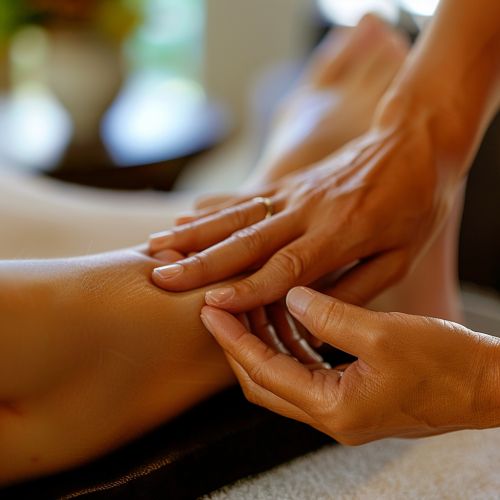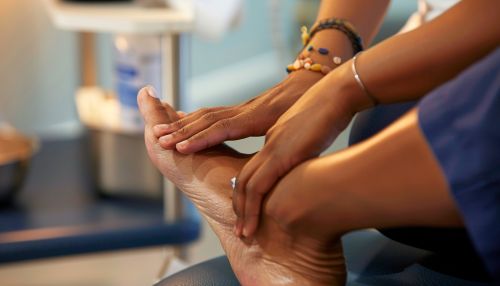Reflexology
Overview
Reflexology, also known as zone therapy, is a type of alternative medicine involving the application of pressure to specific points on the feet and hands. This is done without the use of oil or lotion, and it is believed to promote health and wellness in other parts of the body through the manipulation of these specific reflex areas.


History
The origins of reflexology can be traced back to ancient civilizations such as Egypt, China, and India. However, the modern practice of reflexology as a therapeutic treatment began in the early 20th century with the work of Dr. William H. Fitzgerald, an ear, nose, and throat specialist, and Eunice Ingham, a physiotherapist. Both individuals are often credited with refining the method and promoting it in the medical community.
Theory and Concepts
The underlying theory behind reflexology is that there are certain points or "reflex areas" on the feet and hands that are connected energetically to specific organs, body parts, and systems through energy channels in the body. By applying pressure to reflex areas, a reflexologist can remove energy blockages and promote health in the related body area.
Here are some key concepts in reflexology:
- Zone theory: This theory suggests that the body is divided into ten longitudinal zones from head to toe. In reflexology, these zones relate to specific areas on the feet and hands.
- Qi: Reflexology is commonly associated with the Chinese concept of Qi (pronounced "chee"). This is often described as life force or energy which flows through the body. Reflexologists believe that blockages or imbalances in the flow of Qi can lead to illness.
- Homeostasis: Reflexologists believe that the body is continually striving for a state of balance or homeostasis. By stimulating specific reflex points, they aim to support the body's efforts to function optimally.
Techniques
Reflexologists use a range of different techniques when applying pressure to the feet and hands. These may include thumb or finger walking, where the reflexologist walks their thumb or fingers across different areas of the feet in a set sequence, and massage.
The application of pressure to specific reflex points is thought to stimulate the body's healing process. For example, if a person has a problem with their kidneys, the reflexologist would locate the kidney reflex point on the foot and apply pressure using specific techniques.
Benefits and Uses
Reflexology is often used to complement traditional medical treatments. While it should not be used as a replacement for medical treatment, many people find it helpful for managing stress, enhancing relaxation, improving blood circulation, aiding in pain management, and supporting overall wellness.
Some conditions that reflexologists claim to be able to treat, often in conjunction with traditional treatments, include:
- Stress and stress-related conditions - Tension headaches - Digestive disorders - Arthritis - Insomnia - Hormonal imbalances - Sports injuries - Menstrual disorders, such as premenstrual syndrome (PMS)
Criticisms and Controversies
While reflexology is popular, its effectiveness is not widely accepted in the scientific community. Critics argue that the lack of high-quality scientific evidence supporting the effectiveness of reflexology for treating medical conditions is a significant concern.
Skeptics also question the theories underlying reflexology, arguing that the links between specific areas of the feet and hands and other parts of the body lack anatomical or physiological basis.
Training and Certification
In many countries, reflexology is not a regulated medical profession. However, professional organizations exist that provide training, certification, and continuing education in reflexology.
Training in reflexology often involves completing a certain number of hours of study at a recognized reflexology school, passing an exam, and completing a set number of hours of practical experience.
See Also
- Acupuncture - Alternative Medicine - Massage Therapy - Traditional Chinese Medicine
